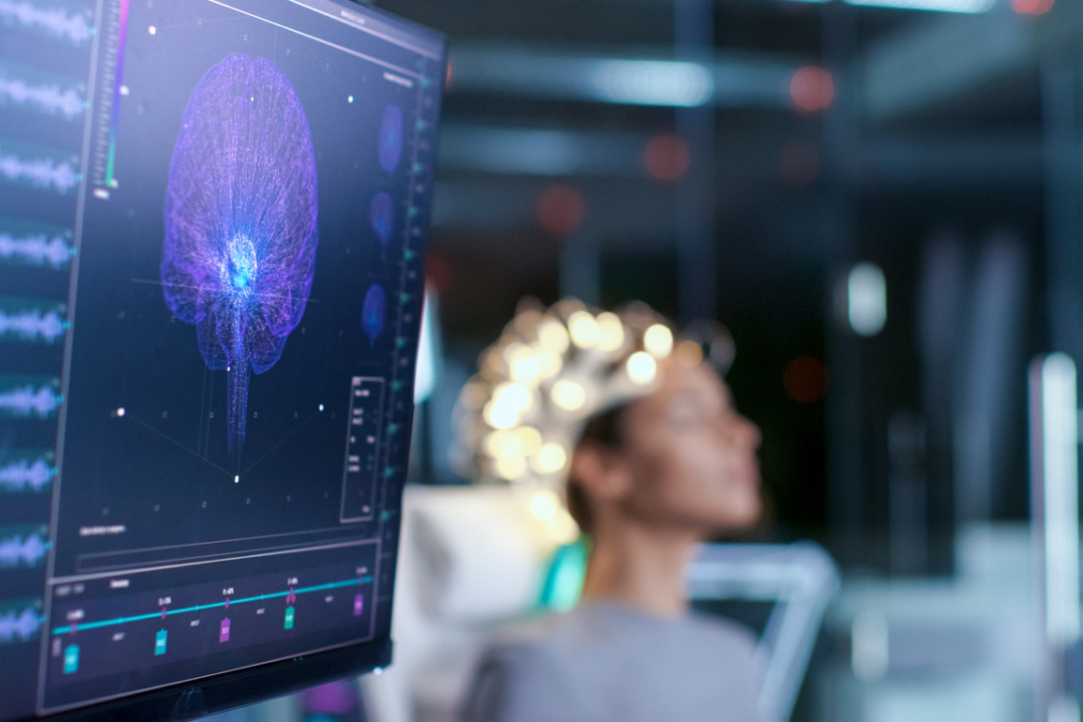Connecting Space and Time: Bilinguals Associate Time with Space in Both Their First and Second Languages

An international team of researchers including scientists at HSE University investigated how bilingual individuals associate time with space. It turns out that in both their first and second languages, people associate the past with the left side of space and the future with the right. In fact, the higher the proficiency in a second language, the more pronounced this relationship becomes. The study findings have been published in Scientific Reports.
Many concepts in language, both concrete and abstract, are perceived through the lens of sensorimotor experience and are associated with a spatial category. For example, processing words with implicit spatial referents, such as 'bird' and 'root,' induces corresponding systematic upward and downward attentional shifts. The association of words with specific positions in space is known as spatial mapping. This phenomenon is also observed in the processing of abstract concepts with emotional, numerical, and temporal semantics. Thus, when mentally counting hours or days of the week, a horizontal mental timeline is automatically activated, with past events on the left and future events on the right.
To determine whether the connection between time and space applies to bilinguals in their second language, an international team of researchers, including scientists at the HSE Institute for Cognitive Neuroscience, conducted an experiment. The participants included 53 bilinguals whose native language was Russian and second language was English, as well as 48 native German speakers who spoke English as a foreign language. The subjects were asked to classify time-related words such as 'yesterday, 'tomorrow,' ‘recently,' 'soon,' and others as referring to the past or the future by pressing the left or right response key.
The experiment included two versions of the task: in one version, the left key corresponded to words related to the past and the right key to words related to the future; in the other version, the right key corresponded to words related to the past and the left key to words related to the future.
The results showed that participants in both groups responded more quickly when the spatial representations and keys associated with the words matched, and more slowly when they did not. At the same time, spatial-temporal mapping was more pronounced in those with greater proficiency in their second language.
To assess their proficiency in the second language, all participants completed the Cambridge General English Test and a translation task.

Anastasia Malyshevskaya
'We replicated our experiment with two groups of bilinguals and found spatial-temporal mapping to be a consistent phenomenon. Moreover, we discovered a connection between the strength of spatial effects and the level of proficiency in a second language: the higher a person’s proficiency, the more pronounced their spatial-temporal mapping,' says the study author Anastasia Malyshevskaya, Junior Research Fellow at the HSE Centre for Cognition & Decision Making.
According to the researchers, learning a second language can improve cognitive flexibility and spatial-temporal thinking. 'The advantage of bilinguals is that they can use both languages to create intricate temporal mental maps,' according to Malyshevskaya.
Anastasia Malyshevskaya
See also:
Scientists Discover Link Between Brain's Structural Features and Autistic Traits in Children
Scientists have discovered significant structural differences in the brain's pathways, tracts, and thalamus between children with autism and their neurotypical peers, despite finding no functional differences. The most significant alterations were found in the pathways connecting the thalamus—the brain's sensory information processing centre—to the temporal lobe. Moreover, the severity of these alterations positively correlated with the intensity of the child's autistic traits. The study findings have been published in Behavioural Brain Research.
Earnings Inequality Declining in Russia
Earnings inequality in Russia has nearly halved over the past 25 years. The primary factors driving this trend are rising minimum wages, regional economic convergence, and shifts in the returns on education. Since 2019, a new phase of this process has been observed, with inequality continuing to decline but driven by entirely different mechanisms. These are the findings made by Anna Lukyanova, Assistant Professor at the HSE Faculty of Economic Sciences, in her new study. The results have been published in the Journal of the New Economic Association.
HSE Scientists Develop Application for Diagnosing Aphasia
Specialists at the HSE Centre for Language and Brain have developed an application for diagnosing language disorders (aphasia), which can result from head injuries, strokes, or other neurological conditions. AutoRAT is the first standardised digital tool in Russia for assessing the presence and severity of language disorders. The application is available on RuStore and can be used on mobile and tablet devices running the Android operating system.
HSE Researchers Discover Simple and Reliable Way to Understand How People Perceive Taste
A team of scientists from the HSE Centre for Cognition & Decision Making has studied how food flavours affect brain activity, facial muscles, and emotions. Using near-infrared spectroscopy (fNIRS), they demonstrated that pleasant food activates brain areas associated with positive emotions, while neutral food stimulates regions linked to negative emotions and avoidance. This approach offers a simpler way to predict the market success of products and study eating disorders. The study was published in the journal Food Quality and Preference.
Russian Scientists Demonstrate How Disorder Contributes to Emergence of Unusual Superconductivity
Researchers at HSE University and MIPT have investigated how the composition of electrons in a superconductor influences the emergence of intertype superconductivity—a unique state in which superconductors display unusual properties. It was previously believed that intertype superconductivity occurs only in materials with minimal impurities. However, the scientists discovered that the region of intertype superconductivity not only persists but can also expand in materials with a high concentration of impurities and defects. In the future, these superconductors could contribute to the development of highly sensitive sensors and detectors. The study has been published in Frontiers of Physics.
HSE Scientists Take Important Step Forward in Development of 6G Communication Technologies
Researchers at HSE MIEM have successfully demonstrated the effective operation of a 6G wireless communication channel at sub-THz frequencies. The device transmits data at 12 Gbps and maintains signal stability by automatically switching when blocked. These metrics comply with international 6G standards. An article published on arXiv, an open-access electronic repository, provides a description of certain elements of the system.
AI vs AI: Scientists Develop Neural Networks to Detect Generated Text Insertions
A research team, including Alexander Shirnin from HSE University, has developed two models designed to detect AI-generated insertions in scientific texts. The AIpom system integrates two types of models: a decoder and an encoder. The Papilusion system is designed to detect modifications through synonyms and summarisation by neural networks, using one type of models: encoders. In the future, these models will assist in verifying the originality and credibility of scientific publications. Articles describing the Papilusion and AIpom systems have been published in the ACL Anthology Digital Archive.
Acoustic Battles for the Harem: How the Calls of Siberian Wapiti Reveal Their Status and Individuality
Researchers at HSE University, Lomonosov Moscow State University, and the A.N. Severtsov Institute of Ecology and Evolution of the Russian Academy of Sciences have studied the distinctive vocalisations of Siberian wapiti (Cervus canadensis sibiricus) stags during the peak of the mating season, when males produce rutting calls (bugles) to attract females (hinds) and deter rivals. The scientists have discovered how the acoustic parameters of these rutting calls reflect the stag's status—whether he currently holds a harem or is still attempting to acquire one—as well as his individual characteristics. The study has been published in Journal of Zoology.
Z-Flipons: How Specific DNA Regions Help Regulate Gene Function
Researchers at HSE University and InsideOutBio have applied machine learning to identify the location and functions of mirror-twisted DNA structures, known as Z-flipons, in human and mouse genomes. The scientists discovered which Z-DNA regions were conserved in both species throughout evolution and demonstrated for the first time that Z-DNA accelerates the process of creating RNA copies of genes. The findings will contribute to the development of new treatments for genetic diseases. The study has been published in Scientific Reports.
HSE Researchers Develop Python Library for Analysing Eye Movements
A research team at HSE University has developed EyeFeatures, a Python library for analysing and modelling eye movement data. This tool is designed to simplify the work of scientists and developers by enabling them to efficiently process complex data and create predictive models.


